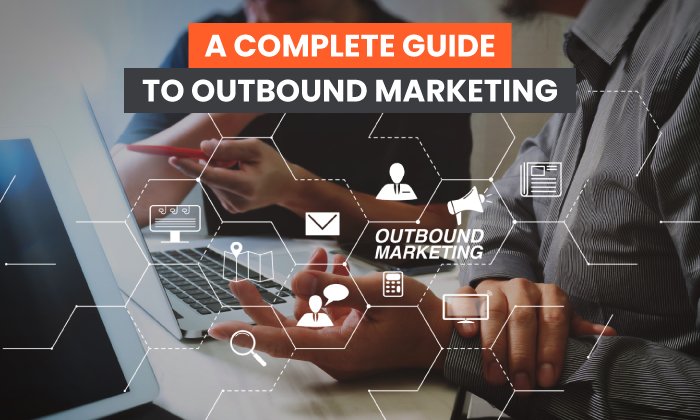A Complete Guide to Outbound Marketing

By Neil Patel
Is outbound marketing right for your business?
How do you decide which strategies are going to help you grow your brand?
If you’ve got questions about outbound, then you’ve come to the right place.
What Is Outbound Marketing?
Outbound marketing is where you (the business) initiate conversations with your customers to attract them to your brand. For example, TV commercials, cold calls, paid ads, and direct mail are all examples of outbound.
Inbound marketing, on the other hand, is when your customer initiates a conversation with you. For example, they visit your website, read an ebook, or download a white paper.
The goal for outbound marketing is to actively build authentic relationships through engagement, targeted communications, and putting your company in the right place at the right time.
There’s no denying that inbound marketing has grown in popularity in recent years (and with good reason, as it produces tremendous results.) However, outbound still takes up 90 percent of marketing budgets due to the high cost per outreach.
To improve your ROI in outbound, you need to allocate your budget to the methods that work for your brand. Below, we’ll cover some strategies to try, but first, let’s talk about its relevancy.
Is Outbound Marketing Still Relevant Today?
Every business owner loves to cut costs. When you, as a consumer, immediately delete a sales promotion email from your inbox without looking at it, you might wonder why that business would continually persist with an outbound strategy.
The likelihood is, they’ve built a huge mailing list and their promotions go to every single email address—paying no heed as to whether each customer is directly their target audience or not.
Why? They’ve invested in building a mailing list, and outbound marketing is still an extremely useful tool. It’s amazingly good at driving brand awareness (as long as your emails aren’t repetitive enough that a customer ends up hating you), maintaining brand relevance, and introducing products to new audiences. It helps you be at the forefront of your customer’s mind, for recommendations, word of mouth marketing, and lead generation.
Inbound marketing is great, and especially for smaller and low-budget businesses, but if customers don’t know your products exist in the first place, they can’t search for something they aren’t aware of.
Outbound marketing guarantees you reach people. You won’t be shouting into the void. Blogs are great for SEO and hoping Google’s Algorithm will take pity on you, but when you pay for a TV ad in a half-time break of a popular show: you know it’s going to be seen.
It can be expensive, but, when done correctly, it still provides a good ROI and is still relevant today as a complement to inbound marketing.
7 Outbound Marketing Strategies to Try
Most marketing success comes through a combination of different strategies. Whether it’s inbound or outbound, there are lots of different ways to reach your …read more
Source:: Kiss Metrics Blog









